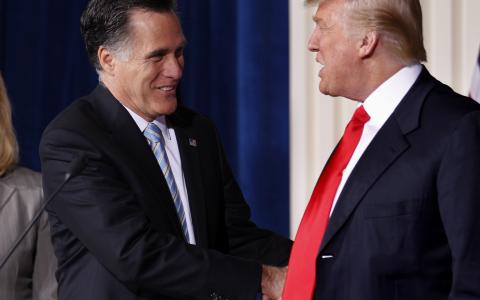
Investors who’ve lost patience with trade barriers and unfocused economic agendas now have a friend in Congress who has real skin in the game.
Mitt Romney’s retirement account was still nebulous when he ran for president six years ago. Now that he’s in the Senate, we know a lot more.
He’s like a lot of ultra-high-net-worth investors. Last year was brutal on even his robustly balanced portfolio, costing him millions in real wealth.
Any Wall Street player in that position will be a little defensive once he gets to Washington. His interests are aligned with the inner workings of the market.
In an era of TV economists and contradictory policy cues, that’s a uniquely differentiated position.
What we don’t know is how he plans to perform in his new role as the old Wall Street hand in Congress.
He might be eyeing a presidential primary bid or simply looking to become a McCain-style spoiler vote on legislation.
Either way, he’s motivated to get the market calmed down and restore a little sense to the signals investors have been receiving.
Follow the RMD
The famous IRA full of low-cost-basis private equity partnership interest was worth exactly $45 million early last year.
That’s not a range or approximation. There’s no $100 million margin for rounding error built into the disclosure forms here.
We know the number because now that Romney has turned 70-1/2, he’s subject to mandatory withdrawal rules designed to ensure that he doesn’t pass the whole tax-advantaged account down to his heirs in one piece.
That required distribution was $1.6 million last year. Any UHNW accountant would tell him to take the absolute minimum.
Do the math, there was $45 million in the account (actually a series of four IRAs) before he told Goldman Sachs to write the check.
And since that was roughly when the market peaked, we can infer that at least on paper the remaining investments have dropped 10-15 percent.
We know this because unlike Romney’s 2012 presidential disclosures, the Senate form is incredibly transparent. While the account balances are reported in ranges, holdings are listed down to the individual ticker symbol.
Someone looking to reverse engineer the portfolios Goldman built for the Romneys can do it. Allocation weights may not be equal within a given account, but then again, it’s hard to say how often they rebalance to eliminate drift.
There’s a lot of emerging markets stocks scattered across these accounts. A tiny bit of hedging via physical gold and S&P 500 puts.
Most of the money is parked in agency debt and structured notes. Nobody’s going to get rich on that side of the portfolio, but barring catastrophe nobody’s going to go broke, either.
That’s worth noting. While Romney is easily worth $100 million, he’s not going to sweat a temporary market downswing. He knows the Wall Street cycle.
What motivates someone with this kind of exposure is long-term stability: federal budgets, rate policy, tiny fluctuations in Treasury default risk.
Unless those parameters start to bend, he’s invulnerable. A few million here and there won’t threaten his overall security.
But if the agencies start to falter, the overall portfolio feels actual pain. That’s what he’ll fight to prevent.
We could dig into his 1,000 declared positions forever, but it really boils down to that.
As far as we’re concerned, Romney’s interests are aligned with preventing another 2008-level credit crisis. We can argue over how effective he’ll be, but as an insurance policy, it’s nice having someone there.



